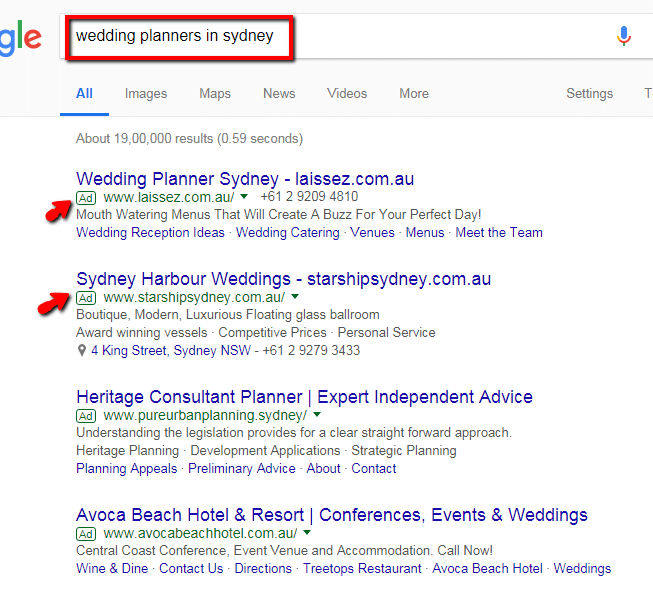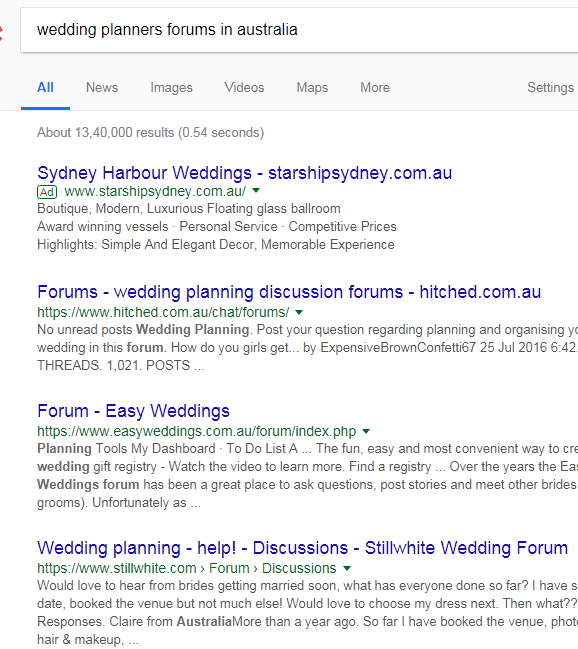When you want an immediate answer or solution to a problem, what do you do? You may ask a friend or a colleague first. But, what happens when they don’t have the answers or are not available to provide you with the information immediately. You search it on Google, Right?

When Google provides hundreds of results to your query, you probably click the ones at the top or to a title which promises to give a better answer to your question. The website you land in is likely to be a blog or an authority website.
Blogs or authority websites are content provided by people who either are experts in that stream or are passionate to share their experiences. Their content usually revolves around a topic or a subject broadly known as the niche. So if you are an expert on any subject or you are passionate about a topic which you want to share your experiences with a group of like-minded people, blogging is the way to go.
Blogging not only makes you an authority or a celebrity in your niche but also opens up a lot of careers and alternative income options. Many people who wish to share their skills and talent with others have become favorite stars in their niche. You too can become one. What you have to do is to start a blog or a website.
It is not difficult to start a blog. In fact, you don’t need a ton of technical knowledge to create a website. Anybody can quickly develop blogs, and nowadays the creation is gradually becoming user-friendly.
Start a Blog or a Website: How-to
Pick a Niche:
To launch a blog or a website, first, you have to pick a niche. Niche can be any subject or topic of your interest, hobby, passion, educational, profession or any problem for that matter. Some examples of Niches are
Education → Science, Mathematics, Languages, Biology etc.
Hobbies → Woodworking, Fishing, Traveling, Yoga, Stamp collection etc.
Passion → Drumming, Swimming, Painting, Video games etc.
Profession → Software developer, Physicist, Engineer, Chartered accountant, Nurse etc
Interests → Cooking, cats, dogs, watching movies, self grooming, spiritualism etc.
Problem → Obesity, heart ailments, diabetes, sleep disorder etc.
The lists of niches are endless, and out of the thousands, you have just to pick one or two which are the closest to you. It should be something that excites you and can keep you going for a long time.
Sub Niche:
Usually, it is advisable not to tread on large niches. You should dig deep into niches and find sub-niches which are a part of the broad niche. It is because of two reasons – Sub niches blogs have higher and deeper engagement with the blogger, and the competition is considerably low.
The examples of Sub niches can be –
Educational → Language → English, Chinese, Arabic, Spanish etc.
Hobbies → Fishing → Ice water fishing, Salt water fishing, Deep sea fishing, night fishing etc.
Passion → Swimming → Freestyle, Breaststroke, Butterfly etc.
Profession → Engineer → Mechanical Engineer, Software Engineer, Civil Engineer etc.
Interests → Dogs → Dog training, Dog food, Dog grooming etc.
Problem → Obesity → Weightloss, Dieting, Bariatric surgery, cardio exercises, running, walking etc.
It is always considered to be a smart step if you pick a sub-niche and start writing content on more specialized stream than a broad stream. People search for specific problems on Google and will usually never search for general terms.
If you write sufficient posts on sub-niches, the user gets better answers to their queries, and they start liking your website and will return for more update information.
Competition:
Competition is an essential factor is starting blogs. You should always assess if the sub-niche you are going to blog is a competitive one or not. In fact, it is still advisable to enter a competitive niche as it means the niche has traffic. Traffic to a website means the visitors to the site.
Now it is a tricky situation, at one point you have to beat the competition, and at another point competition is essential. For a new blogger, competition is not good but to validate whether you are blogging in the niche which has traffic is necessary. If there is no traffic, the purpose of blogging will fail.
How to know the niche has traffic?
If you search by the term “wedding planners in Sydney.”
If you find ads for the words, you typed. It means advertisers are paying to rank for the search term. It says there is traffic in that niche. Advertisers won’t waste their money and time on niches where there is no traffic.
Also, you should search for forums or other blogs in that niche. It means that there are communities who interact in forums and blogs on the topic. It also implies a possibility of people searching for your niche related queries is high.
Domain Name:
The next step is to get a domain name for your blog. It is a personal choice of what you want to name your blog. It is better to name a relevant title to the topic because visitors always prefer simple, appropriate titles to the one which sounds complicated or very creative.

If you think which domain extension to buy, It is always preferable to keep a .com or a .net domain than a .com.au or .info or .me titles. But if you want to keep your traffic limited to your country, then you should opt for the .com.au extension.

You can buy a domain from any trustworthy or popular domain registration sites like GoDaddy.com or hostgator.com. You can also look out for Australian domain registering companies like – www.netregistry.com.au or www.domainnames.com.au.
Hosting:
Hosting is a web service which makes your blog available on the internet. Web hosting can be done hiring a local web hosting services or by anyone who knows how to do it.
You can learn it too by searching the process on Google or Youtube. There are various types of hosting. For a beginner, you need a shared hosting. It is cheap, and you should only upgrade when your traffic grows substantially.
Check our blog on Web hosting.
Content Management system:
Content Management System or CMS is a web-based programme which sits on the hosting service where you write, modify, design, manage, publish and archive your content. It is the window or the layout of your content for the users to read your blog.
WordPress is one of the leading and the popular content platform in the world when It comes to blogging. It is user-friendly, and installation is not complicated.

You can install WordPress with the help of the one who is hosting your site or from the ones who have done it earlier. We have a detailed course on WordPress, you can check it here.
Write posts:
So the wait is over. You can start writing posts on your blog. But make sure you write original content. It is for two reasons. First, If it is original, the user will get a valuable and fresh perspective on what you have provided. It will increase engagement, and they will keep returning to the site if they find it is fulfilling their queries.
Second, original content is always rewarded by Google and helps you rank faster. Also, duplication may land you in legal troubles if you don’t mention the source of the content.
A good headline is very important when it comes to catching eyeballs. Your blog will be listed among thousands. So if your headline is not catchy and innovative, readers will possibly ignore your site. The best trick is to keep it simple and direct. It should direct towards providing a solution to the search term and how the user will be in an advantageous position than others.
The search term is also known as “keyword” which will help you to rank if you provide quality content closest to the keyword. Be aware not to stuff too much of the keyword in your article and use it only when it blends into the blog organically.
Don’t forget to add images and graphics to support your article. When things are complete, it is time to publish.
Publish:
Publishing is the most satisfying part. Click the publish button but before hitting the button, review your article and correct the grammatical mistakes if any. Once you have edited it, look out for the links you wish to put in the texts to guide readers to other pages within your sites.
Blogs take time to get traction from Google. So once you have published your article, it will take a while to be ranked. So don’t expect people are visiting your website soon.
Share:
Once your post publishes, you should immediately share it on the social sites. It will give you instant traffic, but it will be all because of your efforts. Google won’t be helping for at least six to nine months. Social websites come in handy to get the initial traffic boost to your site. For the first few months, you should be promoting it aggressively and ask your colleagues and friends to share it.
Get Traffic:
Getting traffic in the beginning can be tough. There are free and paid approaches to generate good traffic to your websites.
Once Google recognizes your blog as a valuable website, will slowly start sending you organic traffic as well. Till Google does its job, you have to rely on your efforts to generate traffic.
Initially, you should publish at least 20 to 25 blog posts. Then start sharing your posts. When visitors find your website has enough articles, they will keep visiting and the engagement time with your website will increase. It will also help your site rank faster on Google as it will start getting the data of your website engagement.
Conclusion:
Starting a blog is comparatively easy. The initial legwork stops many from starting a blog. But once you overcome it, you will be only posting and sharing your content. The real motivation, however, comes when you start getting consistent traffic to your site, and also people start recognizing you.
So, what are you waiting for? Start your blog right now.